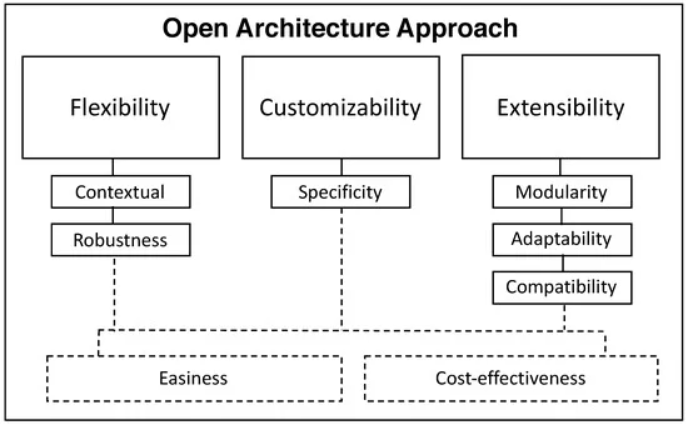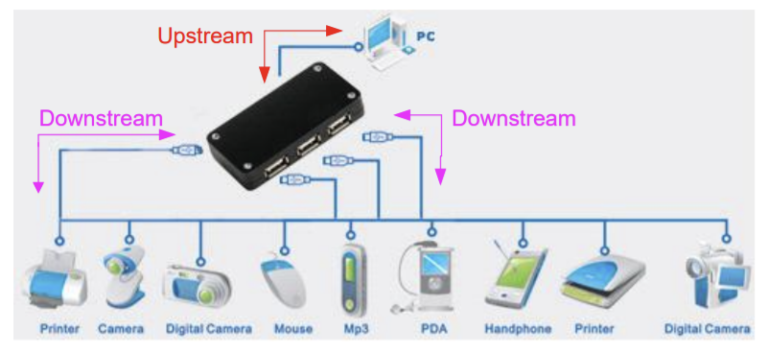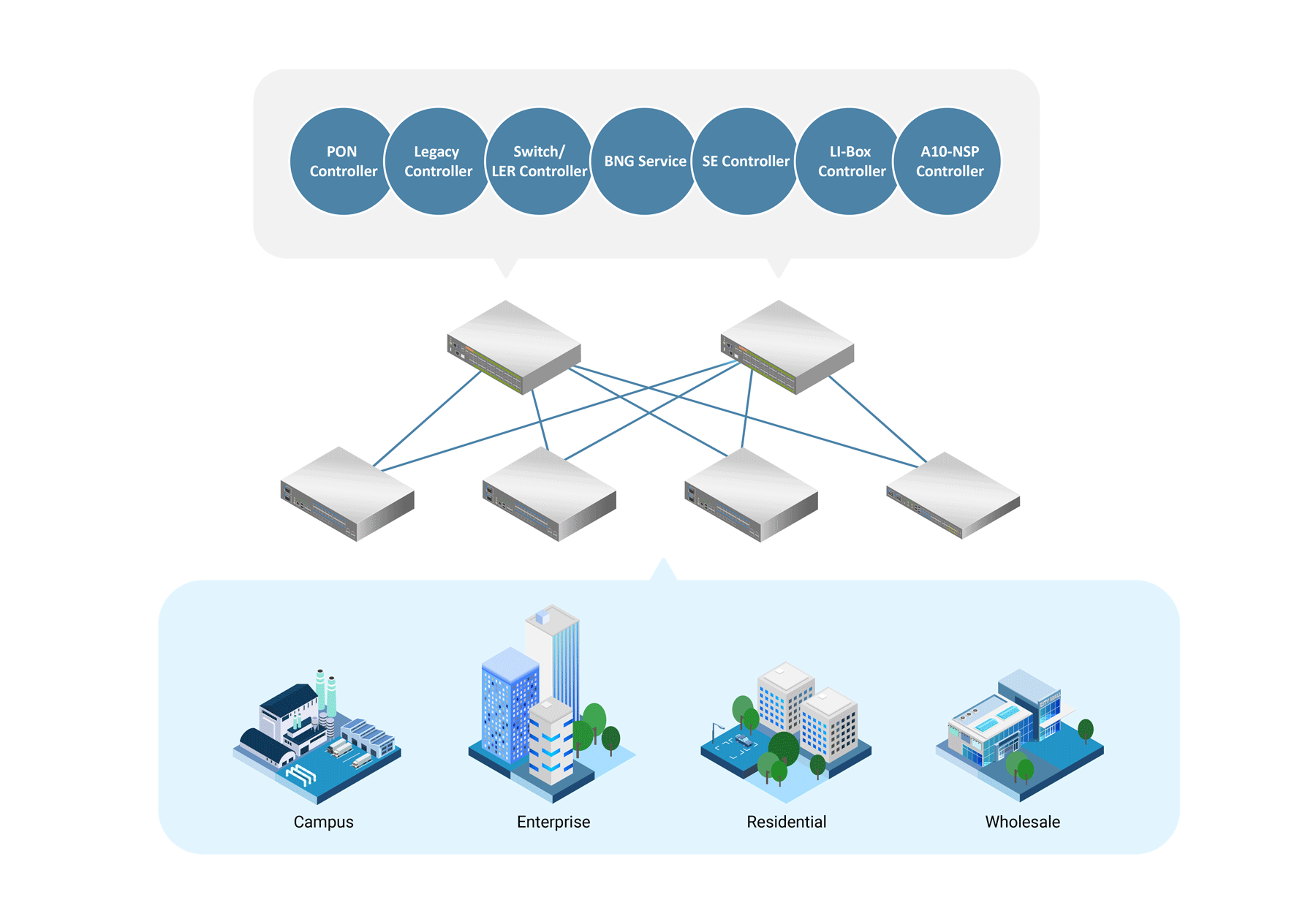In the rapidly evolving world of technology, the concept of open architecture has emerged as a transformative force. At its core, open architecture is a type of system design that promotes interoperability, modularity, and the sharing of resources. It allows for components within a system to be easily exchanged or upgraded, fostering innovation and competition. This design philosophy not only impacts how technologies are developed and integrated but also significantly influences the market dynamics for new and existing companies, benefits consumers, and meets regulatory demands more efficiently. As U.S. government agencies like TSA, DHS, and DOD continue to push for Open Architecture in their projects and requirements, one might think this concept a new innovation poised to disrupt how companies and people do business. On the contrary, the concept of Open Architecture has existed for as long as people have worked towards the standardization of different elements to allow for others to build upon those components further down the line.

Real-World Examples of Open Architecture
-
Linux Operating System: Linux is a prime exemplar of open architecture in software. Originated by Linus Torvalds in 1991, Linux is an open-source operating system kernel that is at the heart of various distributions such as Ubuntu, Fedora, and CentOS. Its open-source nature means that the source code is freely available for anyone to view, modify, and distribute. This openness has fostered a vast, collaborative community of developers and users who contribute to the kernel, develop new features, and ensure security and stability. The architecture of Linux is modular, meaning that it supports the addition of software and hardware components seamlessly. This modularity, combined with its open-source status, allows for extensive customization and scalability, making Linux suitable for applications ranging from embedded systems and mobile devices to supercomputers
-
Android OS: Android OS, developed by Google, is another powerful example of open architecture's impact on technology. Based on the Linux kernel, Android is an open-source operating system designed primarily for touchscreen mobile devices, such as smartphones and tablets. Its open nature allows manufacturers to modify and customize the OS to fit their hardware and business models, leading to a diverse range of devices that can cater to different market segments and consumer preferences. Android's open architecture has led to its widespread adoption, with a vibrant ecosystem of developers creating apps for the Google Play Store, thereby enhancing the platform's functionality and appeal. This openness has made Android the most widely used mobile operating system in the world, demonstrating the potential of open architecture to drive innovation and market dominance.
-
Open Banking: Open Banking is a financial services term that refers to the use of open APIs (Application Programming Interfaces) that enable third-party developers to build applications and services around the financial institution. This concept has emerged from a combination of regulatory initiatives and industry standards aiming to foster innovation, competition, and transparency in the banking sector. Open Banking embodies the principles of open architecture by allowing secure and standardized access to banking data (with the customer's consent), enabling the development of new services and products. For example, fintech companies can create apps that provide consumers with personalized financial advice, better manage their finances across different accounts, or offer more competitive loans and insurance products. The open architecture of Open Banking transforms the traditional banking ecosystem into a more integrated and collaborative space, where banks, fintech companies, and other financial service providers can leverage shared data to enhance customer experiences, streamline operations, and introduce innovative services.
-
The Universal Serial Bus (USB): The USB standard a prime example of open architecture in the world of personal computing and electronics. Before the standardization of USB, connecting devices to a computer involved a variety of different ports and cables, leading to compatibility issues and confusion for both consumers and manufacturers. The introduction of the USB standard simplified this process, providing a single, unified port that could support a wide range of devices, from keyboards and mice to storage devices and smartphones. The USB standard is maintained by the USB Implementers Forum (USB-IF), which includes companies from across the tech industry. This consortium works together to ensure the standard is open and accessible, allowing any company to develop products that are compatible with the USB specification. This openness has led to the widespread adoption of USB, making it a ubiquitous feature of modern electronic devices.
-
Railroad Gauges: The standardization of railroad gauges (the distance between the inner sides of the rails) is another example of open architecture, this time in the transportation sector. In the early days of railroads, different railway companies used different gauges, which complicated the network's interoperability and significantly hindered the efficient transportation of goods and passengers over long distances. The eventual standardization of rail gauges in many parts of the world (with the notable example being the 4 feet, 8.5 inches standard in the United States and much of Europe) is akin to adopting an open architecture. This standardization allowed trains to travel on tracks operated by different companies without the need for changing wheels or transferring cargo to a different train with a compatible gauge, greatly improving the efficiency and reliability of rail transport.
-
Fuel Pumps: At every gas station you find the familiar fuel pumps for cars and trucks, and these too represent open architecture in the sense that they adhere to standardized specifications enabling vehicles from different manufacturers and regions to refuel at a wide array of service stations. This standardization includes the size and shape of the nozzle, the type of fuel dispensed, and the pressure specifications, ensuring compatibility across a broad spectrum of vehicles. This open approach facilitates travel and commerce by ensuring that vehicles can access the fuel they need, regardless of their make or country of origin.

Impact on Technology and Market Dynamics
For New Companies
-
Lower Barriers to Entry: Open architecture systems lower the cost and complexity of entering a market. New companies can leverage existing platforms and standards to build their products or services, focusing on innovation rather than infrastructure. Additionally, this can allow for companies or people who specialize in specific components or processes to bring their product into the ecosystem without having to develop a full end to end product themselves. With an open architecture system in place, their potential "best in class" solution can be immediately adopted and put to use where it adds the most value without anchoring the development process with the other areas where they may not be as skilled or experienced.
-
Increased Innovation: The collaborative nature of open architecture fosters a culture of innovation, as companies can build upon each other's work, iterate, and improve rapidly. Similar to the above example, there is no need for multiple teams to "reinvent the wheel" in their own way. Instead, each company can focus on their strength, or pursue an area of market need, and develop what potentially may provide the most value both to the company and the customer alike. This allows innovation to occur rapidly and more efficiently as new entrants are not required to foster an immense amount of capital to "catch up" to the rest of the market.
-
Community and Ecosystem Growth: Startups benefit from the existing community and ecosystem around open platforms, gaining access to a wealth of knowledge, tools, and collaborators. By providing a path forward into the marketplace, startups can prepare to chart a course the leads to adoption of their solution quickly. Additionally, existing firms stand to benefit by expanding the pool to additional contributors that can enhance the performance of their foundational products and offerings. Open architecture can entice new and innovative participants to provide solutions that established vendors may not pursue due to risk, resource constraint, or simply not having thought of a particular approach in the first place.
For Established Vendors
-
Sustained Competitive Advantage: By embracing open architecture, established firms can continuously evolve their offerings, incorporating new technologies and meeting changing consumer demands more efficiently. As new entrants into the marketplace bring components, or pieces of solutions to build upon the foundational technology offered by the pre-existing vendor, the vendor can focus on advancing their product to enable these new features and components, thus potentially improving their value, market share, and potential simply by supporting the latest cutting edge technologies.
-
Cost Efficiency: Open systems can reduce dependency on proprietary solutions, lowering costs related to licensing fees and vendor lock-in. As the customer, you ultimately desire to have the best performance for the best value. Open architecture enables this by providing the very basis for which customers can choose best in class solutions, make informed decisions based on performance or cost, and end up with a full end-to-end product that meets their needs and their budget.
-
Market Expansion: Open architecture enables companies to reach new markets and customers by making it easier to integrate with other products and services within the ecosystem. Additionally, for established vendors, this allows potential integration of their own proven and best in class technologies with other established vendors who they could not have interoperated with before. Previously closed off market segments, once they have enabled open architecture, will once again be open to all vendors as customers will shop more for best in class components and values to build the full system that meets their needs.
Benefits to Customers and Regulators
-
Enhanced Consumer Choice: Open architecture increases the variety of products and services available, giving consumers more choices tailored to their needs. Startup and small companies may be less risk adverse, and more inclined to push the envelope on technology that provides significant reward to the customer. Additionally, customers are able interoperate different brands of equipment and software to provide the best end-to-end solution for their needs. Prefer a different user interface because your team is familiar with a particular brand? No problem. Did you need a hardware with a faster throughput or more reliable operational uptime? Prioritize that. With open architecture, the opportunities for choice is endless.
-
Improved Service Quality: The competitive environment fostered by open architecture drives improvements in quality, as companies must innovate to attract and retain customers.
-
Transparency and Security: For regulators, open systems offer more transparency, making it easier to audit and ensure compliance with standards and regulations. Whether the open architecture platform is established as an industry standard and maintained through cooperation, or owned by an agency and maintained with input from industry, the establishment of that open system in and of itself will provide regulators transparency into the operations and networking of the various components. This is essential, now more than ever, as cyber security concerns continue to grow. Additionally, the collective scrutiny of open-source code can lead to more secure systems with multiple contributors working in concert to ensure a reliable, safe, and complete product.

The Future of Open Architecture
The momentum behind open architecture is undeniable. Users have reasons to be excited as they stand to benefit from more personalized, efficient, and secure services. For companies, the shift towards open architecture is not without challenges, particularly concerning how to monetize their offerings in an open ecosystem. However, the advantages of increased innovation, market flexibility, and consumer satisfaction are compelling reasons for companies to embrace this paradigm shift.
As technology continues to advance, the principles of open architecture will likely become even more integral to the design and deployment of digital solutions. The ongoing dialogue between innovation and regulation, the balance between competition and collaboration, and the endless pursuit of improving human experiences through technology all find a common ground in open architecture. It is a fertile field for the next waves of technological advancement, promising a future where technology is more inclusive, accessible, and aligned with the broader interests of society. Don't wait to get involved and find out how your technology can benefit from the open architecture movement in TSA and DHS.
If you're interested in discussing how your team, company, or projects can incorporate DICOS and OPSL to prepare to enter the aviation security ecosystem in the United States or Internationally, Stratovan's DICOS and OPSL experts are ready to help you navigate those topics. Learn more about OPSL or DICOS (https://www.stratovan.com/products/search?field_product_category_target_id=75), or reach out to us here with any questions! (https://www.stratovan.com/contact)